-
 bitcoin
bitcoin $120167.907534 USD
1.27% -
 ethereum
ethereum $4468.611945 USD
2.53% -
 xrp
xrp $3.013607 USD
1.80% -
 tether
tether $1.000549 USD
-0.01% -
 bnb
bnb $1092.592149 USD
6.28% -
 solana
solana $231.391244 USD
4.59% -
 usd-coin
usd-coin $0.999699 USD
-0.04% -
 dogecoin
dogecoin $0.259020 USD
4.30% -
 tron
tron $0.342747 USD
0.34% -
 cardano
cardano $0.860977 USD
1.07% -
 hyperliquid
hyperliquid $50.155412 USD
5.34% -
 chainlink
chainlink $22.637678 USD
0.46% -
 ethena-usde
ethena-usde $1.000528 USD
-0.07% -
 avalanche
avalanche $30.613779 USD
-0.07% -
 stellar
stellar $0.403905 USD
0.94%
What does "composability" mean in DeFi?
DeFi composability lets different protocols seamlessly integrate, like Lego bricks, creating innovative financial products and services, but requires careful consideration of security risks and complexities.
Mar 14, 2025 at 12:36 pm

- Composability in DeFi refers to the ability of different decentralized finance (DeFi) protocols to interact and combine seamlessly, creating novel financial products and services.
- This interoperability is a core tenet of the DeFi ecosystem, fostering innovation and efficiency.
- Understanding composability requires exploring its mechanisms, benefits, and limitations within the context of blockchain technology.
- Several examples illustrate the practical applications and implications of composable DeFi protocols.
- Security concerns and potential risks associated with composability need careful consideration.
Composability in the context of decentralized finance (DeFi) signifies the capacity of distinct DeFi protocols to integrate and operate together effortlessly. Think of it like Lego bricks: each brick (protocol) is a standalone unit, yet they can be combined to build complex structures (novel financial applications). This interconnectedness is a defining feature of DeFi, empowering developers to create innovative financial instruments and services without starting from scratch. The ability to combine existing building blocks drastically accelerates development and expands the possibilities within the ecosystem.
How Does Composability Work in DeFi?Composability in DeFi is primarily facilitated by the use of smart contracts and standardized interfaces. Smart contracts, self-executing contracts with the terms of the agreement between buyer and seller being directly written into lines of code, automate interactions between different protocols. Standardized interfaces, such as those based on the Ethereum Virtual Machine (EVM), ensure compatibility between various applications. This allows protocols to communicate and exchange data securely and transparently, forming a synergistic ecosystem.
Mechanisms Enabling Composability:- Standardized Token Formats: ERC-20 tokens, for instance, provide a common standard for representing assets on the Ethereum blockchain, enabling easy transfer and integration between different DeFi applications.
- Open-Source Protocols: The open-source nature of many DeFi protocols allows developers to examine, modify, and integrate existing code into their own projects, fostering collaboration and rapid innovation.
- Decentralized Oracles: These oracles provide real-world data to smart contracts, enabling DeFi protocols to interact with off-chain information and expand their functionalities. For example, a DeFi lending protocol might use an oracle to determine the current price of an asset before executing a loan.
- Increased Innovation: Composability enables developers to build upon existing projects, accelerating innovation and leading to the creation of novel financial products and services. Instead of building everything from scratch, developers can leverage existing functionalities and focus on unique aspects.
- Enhanced Efficiency: By combining different protocols, DeFi applications can automate complex processes, reducing transaction costs and improving efficiency. This streamlined approach translates to a more user-friendly experience.
- Greater Liquidity: Composability can enhance liquidity within the DeFi ecosystem by allowing assets to be easily moved between different protocols. This improved liquidity facilitates smoother trading and reduces slippage.
- Expanding Ecosystem: The ability to combine protocols attracts more developers and users to the DeFi space, fostering growth and further expanding the range of available financial services.
- Lending and Borrowing: A user might deposit tokens into a lending protocol, then use those deposited tokens as collateral to borrow from another DeFi platform. This combines lending and borrowing functionalities.
- Yield Farming: This involves strategically moving assets across different DeFi protocols to maximize returns. This requires seamless interaction between multiple platforms.
- Decentralized Exchanges (DEXs): DEXs frequently integrate with other DeFi protocols, such as lending platforms or stablecoin protocols, to provide additional features and enhance user experience.
- Security Risks: The interconnected nature of composable systems can amplify the impact of vulnerabilities. A security flaw in one protocol can potentially affect other interconnected protocols.
- Complexity: The increasing complexity of composable systems can make them harder to audit and understand, potentially leading to unexpected bugs or vulnerabilities.
- Smart Contract Risks: Bugs or vulnerabilities in smart contracts can lead to significant financial losses. Thorough auditing and testing are crucial to mitigate these risks.
- Regulatory Uncertainty: The regulatory landscape for DeFi is still evolving, and the implications of composability for regulatory compliance are still unclear.
A: Limitations include the potential for cascading failures due to vulnerabilities in interconnected protocols, the complexity of auditing and securing complex systems, and the lack of standardized interfaces across all blockchains.
Q: How does composability differ from interoperability?A: While related, composability focuses on the ability of different protocols to function together to create new applications, while interoperability emphasizes the ability of different blockchains or systems to exchange data. Composability is a subset of interoperability.
Q: Is composability only relevant to Ethereum?A: While Ethereum's EVM has fostered a highly composable ecosystem, the concept of composability applies to other blockchains as well. However, the level of composability can vary depending on the blockchain's architecture and the adoption of standardized interfaces.
Q: What are the future implications of composability in DeFi?A: Future implications include the creation of even more sophisticated and complex financial instruments, the development of novel financial services, and the potential for greater financial inclusion through access to decentralized financial tools. However, addressing security and regulatory challenges remains crucial.
Disclaimer:info@kdj.com
The information provided is not trading advice. kdj.com does not assume any responsibility for any investments made based on the information provided in this article. Cryptocurrencies are highly volatile and it is highly recommended that you invest with caution after thorough research!
If you believe that the content used on this website infringes your copyright, please contact us immediately (info@kdj.com) and we will delete it promptly.
- BlockDAG, DOGE, HYPE Sponsorship: Crypto Trends Shaping 2025
- 2025-10-01 00:25:13
- Deutsche Börse and Circle: A StableCoin Adoption Powerhouse in Europe
- 2025-10-01 00:25:13
- BlockDAG's Presale Buzz: Is It the Crypto to Watch in October 2025?
- 2025-10-01 00:30:13
- Bitcoin, Crypto, and IQ: When Genius Meets Digital Gold?
- 2025-10-01 00:30:13
- Stablecoins, American Innovation, and Wallet Tokens: The Next Frontier
- 2025-10-01 00:35:12
- NBU, Coins, and Crypto in Ukraine: A New Yorker's Take
- 2025-10-01 00:45:14
Related knowledge

How to track DeFi activity on a block explorer
Sep 04,2025 at 05:36pm
Bitcoin's Role in Decentralized Finance1. Bitcoin remains the cornerstone of the cryptocurrency ecosystem, serving as both a store of value and a benc...
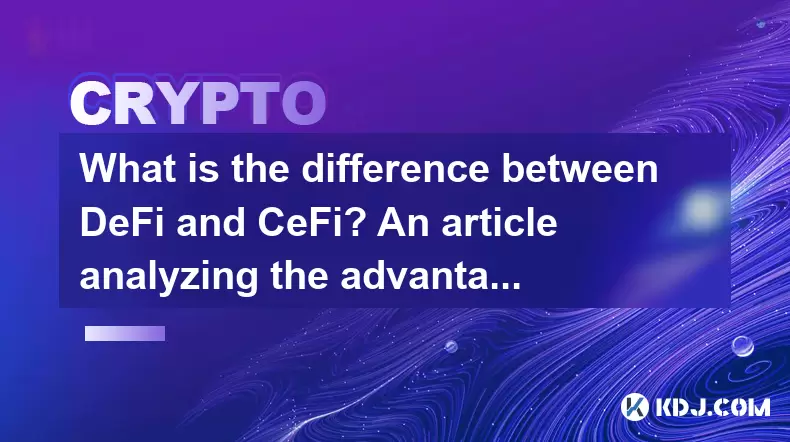
What is the difference between DeFi and CeFi? An article analyzing the advantages and disadvantages of both
Jun 13,2025 at 03:57am
Understanding the Foundations of DeFi and CeFiTo fully grasp the difference between DeFi (Decentralized Finance) and CeFi (Centralized Finance), it’s ...
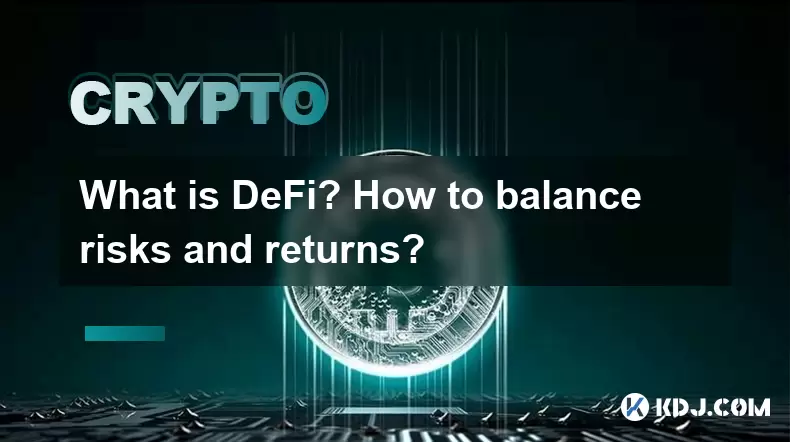
What is DeFi? How to balance risks and returns?
May 31,2025 at 12:22pm
What is DeFi? How to Balance Risks and Returns? Decentralized Finance, commonly known as DeFi, represents a revolutionary shift in the financial ecosy...
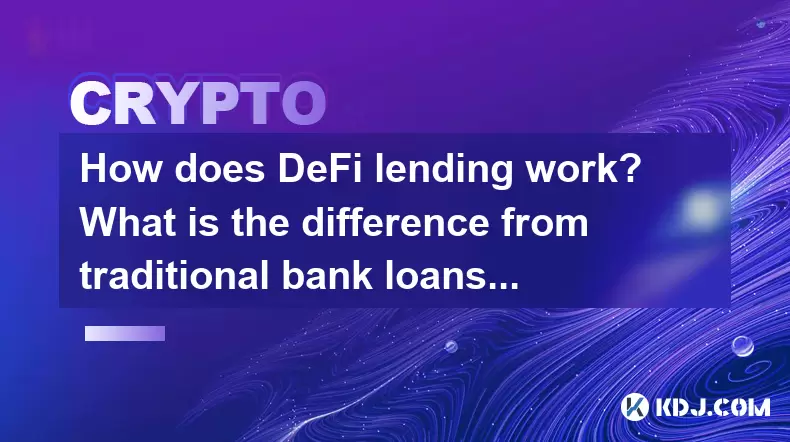
How does DeFi lending work? What is the difference from traditional bank loans?
May 29,2025 at 05:36pm
Introduction to DeFi LendingDeFi lending, or decentralized finance lending, represents a revolutionary shift in the way borrowing and lending are cond...
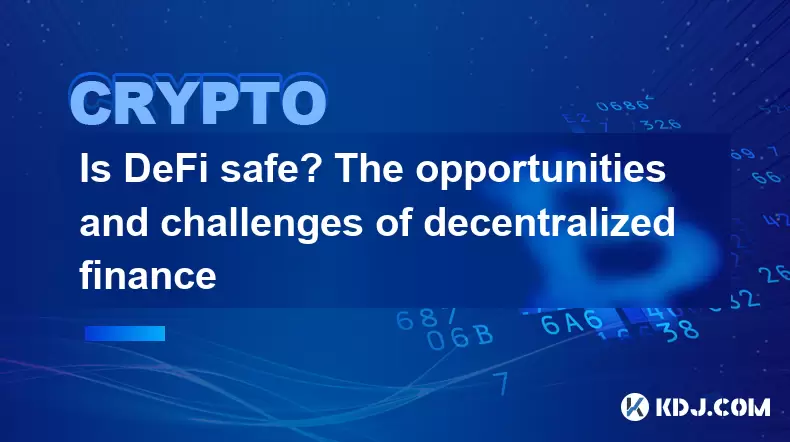
Is DeFi safe? The opportunities and challenges of decentralized finance
May 27,2025 at 02:28pm
Decentralized Finance, commonly known as DeFi, has revolutionized the financial landscape by offering a range of financial services without the need f...
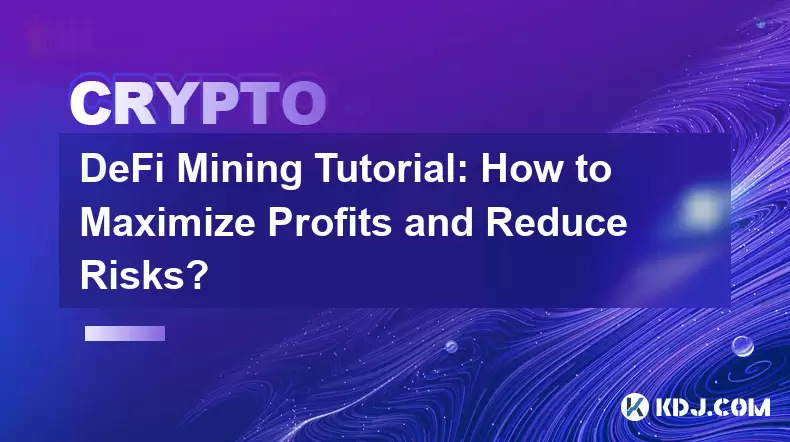
DeFi Mining Tutorial: How to Maximize Profits and Reduce Risks?
May 27,2025 at 07:42am
DeFi, or Decentralized Finance, has opened up a new world of opportunities for crypto enthusiasts looking to maximize their profits through various mi...

How to track DeFi activity on a block explorer
Sep 04,2025 at 05:36pm
Bitcoin's Role in Decentralized Finance1. Bitcoin remains the cornerstone of the cryptocurrency ecosystem, serving as both a store of value and a benc...

What is the difference between DeFi and CeFi? An article analyzing the advantages and disadvantages of both
Jun 13,2025 at 03:57am
Understanding the Foundations of DeFi and CeFiTo fully grasp the difference between DeFi (Decentralized Finance) and CeFi (Centralized Finance), it’s ...

What is DeFi? How to balance risks and returns?
May 31,2025 at 12:22pm
What is DeFi? How to Balance Risks and Returns? Decentralized Finance, commonly known as DeFi, represents a revolutionary shift in the financial ecosy...

How does DeFi lending work? What is the difference from traditional bank loans?
May 29,2025 at 05:36pm
Introduction to DeFi LendingDeFi lending, or decentralized finance lending, represents a revolutionary shift in the way borrowing and lending are cond...

Is DeFi safe? The opportunities and challenges of decentralized finance
May 27,2025 at 02:28pm
Decentralized Finance, commonly known as DeFi, has revolutionized the financial landscape by offering a range of financial services without the need f...

DeFi Mining Tutorial: How to Maximize Profits and Reduce Risks?
May 27,2025 at 07:42am
DeFi, or Decentralized Finance, has opened up a new world of opportunities for crypto enthusiasts looking to maximize their profits through various mi...
See all articles










































































